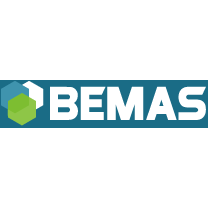4-day training: System Reliability & Availability Modeling with Weibull
Belgique, Antwerpen
Summary :
Weibull is a statistical method for analyzing small datasets in order to predict component reliability. The goal of this course is to gain the ability to use Weibull Analysis and System Modeling to improve system reliability. This course is designed to provide the attendee with the necessary skills and knowledge to perform Weibull Analysis of failure data, and to gain a fundamental understanding of how to use Availability Modeling to solve everyday reliability problems in their facilities.
During the workshop you will :
- Create tables for labor, spares, and special equipment
- Create a Reliability Block Diagrams
- Create failure models for each block
- Failure Distribution for Probability
- Repair times
- Spares usage
- Labor usage
- Equipment usage
- Preparation time
- Assign failure consequences
- Interpret model output and find optimization opportunities.
Registration mail : info@bemas.org
Programme
Weibull Analysis (Day 1)
- What is Weibull and why it is important for Reliability Engineering?
- How to use Probability Distributions to help you understand facility performance
- How to interpret Weibull Parameters
- How to build maintenance strategies based on Weibull shapes
- How to calculate Weibull Parameters using manual methods
- How to calculate Weibull Parameters using Microsoft Excel®
- How to build Process Reliability Plots
- How to measure Reliability Growth
- How to predict future performance
- How to make predictions with small datasets (1 failure)
- How to structure your data collection system to enhance
Availability Modeling (Day 2)
- How to build Reliability Block Diagrams (RBDs)
- How to use RBDs to pinpoint areas of concern in your facility
- How to use RBDs to help with Reliability-Centered Maintenance (RCM) analysis
- How to calculate overall reliability of series systems
- How to calculate overall reliability of redundant systems
- How to incorporate production storage and buffers into the availability model
- How to interpret the results of an availability model
- When to use Weibull parameters in an availability model
Advanced availabiliy modeling workshop (day 3 & day 4)
You will learn to build a series of simple to complex reliability models using real failure data using a powerful modeling software: “Availability Workbench” by Isograph, LTD. (More information about the software: www.availabilityworkbench.com). A temporary license will be offered free to participants who need to install the program on their computer a week before training.In addition, participants will have the opportunity to modulate their equipment data to draw conclusions. You will be able to come up with data such as the name of the failed equipment + how long it was in service.
This workshop is designed to gain a deep understanding of availability modeling, and to learn the practical skills to build availability models and perform reliability analysis and optimization.
Résumé
Bill Keeter (USA) is the president of BK Reliability Engineers Inc.( http://billkeeter.com) where he provides training and facilitation services to help facilities improve asset performance using Weibull Analysis, Reliability Centered Maintenance, Availability Simulation, and Life Cycle Cost Analysis. Bill has extensive experience managing capital projects both large and small over his 25 plus years In Maintenance Engineering and Management.
One capital project he managed was a multimillion dollar project to install three printing presses, a paper treating machine, several slitter re-winders, and all of the support equipment required for their operation. As Maintenance and Engineering Manager at a large plastic film manufacturer, he used what he learned to lead and manage a group of project engineers that successfully implemented several concurrently run capital projects in a very short period of time. Successful implementation of the system led to the completion of several projects that were on time, on budget, and performed to the full expectations of the organization.
More recently Bill successfully managed a team of ten engineers, contractors, and specialist to complete a multi-million dollar project to provide a detailed equipment maintenance plan (EMP) for a 1.5 billion dollar Greenfield project to build a new aluminum smelter. The team used Reliability Centered Maintenance and Availability Simulation and Modeling.
Bill’s experience includes maintenance leadership positions in the US Military, the nuclear industry, chemicals, paper converting, and plastic film manufacturing. He has provided training and reliability consulting services to petroleum, process, mining, and defense industries in the United States, Mid-East, and Europe. Bill is a Certified Maintenance and Reliability Professional (CMRP) with the Society for Maintenance and Reliability Professionals (SMRP).

